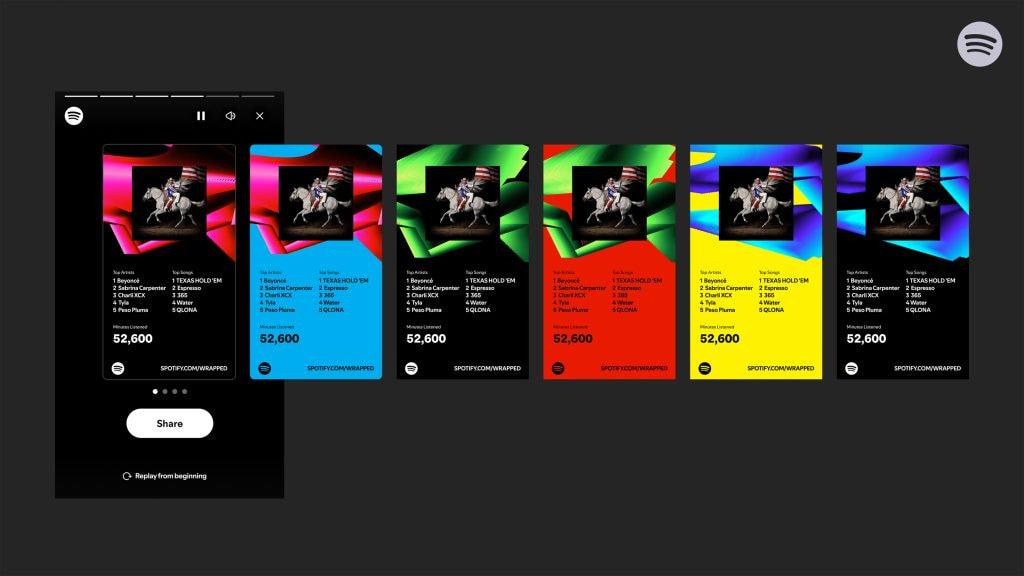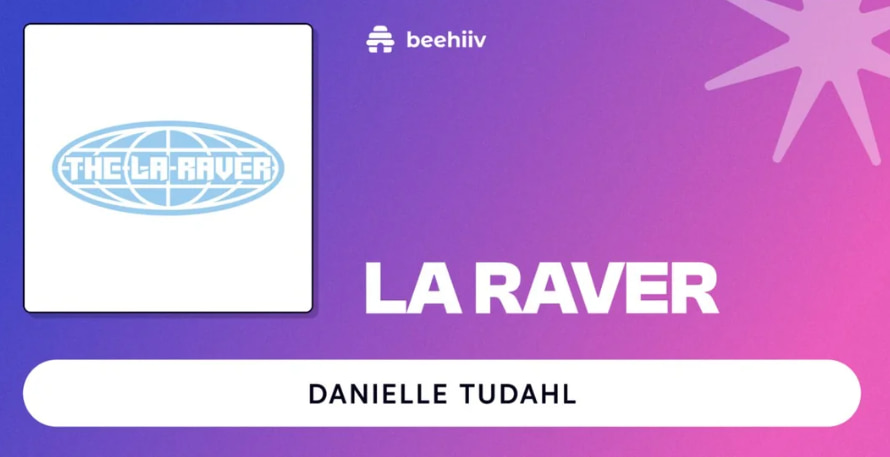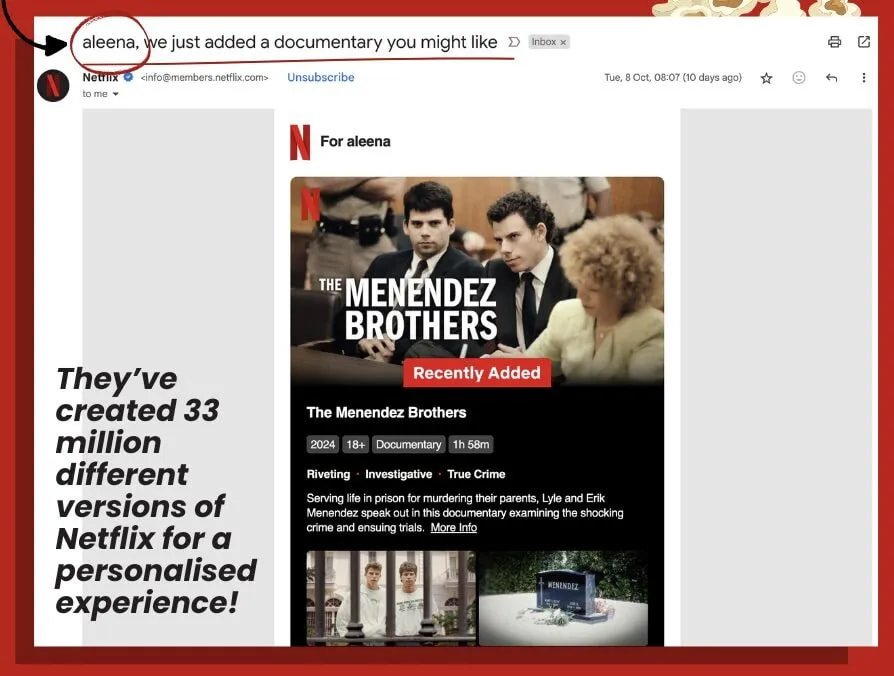Email still wins in 2025—but the biggest gains aren’t coming from “more sends.” They’re coming from tighter data, fewer tools, smarter automations, and clear value exchange with subscribers. Below are five concrete case studies email marketing from this year across ecommerce, DTC subscriptions, and media, plus takeaways you can copy now.
Check out 5 Email Marketing Mistakes That Affect Free Trial Conversion Rates (+Tips to Avoid Them) for common errors that can reduce performance in campaigns.
Table of Contents
Tatcha – +20% New Year Promo Revenue with Unified Email + SMS (beauty, DTC)
Tatcha, the Unilever-owned luxury skincare brand inspired by Japanese traditions, runs an annual New Year event called Fukubukuro (“lucky bag”). Customers unlock mystery product bundles by spending above set thresholds—$100 spend unlocks a $100-value bag, $200 spend unlocks a $200-value bag.
The goal for 2025 was to scale the promotion, grow direct-to-consumer revenue, and use Klaviyo email and SMS to power a more cohesive customer experience.
What they did in email (and SMS)
- Expanded campaigns by relevance: Sent most promo emails to engaged subscribers, but also included less-engaged audiences who had previously purchased the featured product category;
- Refreshed flows for higher impact: Updated welcome and abandonment flows to spotlight the promotion, and launched a new site-abandonment flow that lifted automated revenue;
- Boosted SMS list and performance: Used Klaviyo’s AI-powered pop-up optimization to maximize SMS sign-ups before the event. Their record-breaking SMS send at launch drove 23% more revenue than their previous top performer;
- Cross-channel amplification: Promoted social unboxing content via email and used Klaviyo’s Facebook integration to build lookalike audiences while excluding recent purchasers from paid media.
2025 results:
- +20% YoY ecommerce revenue growth during Fukubukuro 2025;
- 47% of e-commerce revenue attributed to Klaviyo during the promotion;
- +70% YoY growth in flow-driven revenue, showing automations worked harder thanks to refreshed creative and new triggers.
Why this worked in 2025
Tatcha nailed it in 2025 with a simple formula: perfect timing, unified systems, and killer relevance. They capitalized on a quiet inbox post-holidays to stand out. Using Klaviyo as their central hub streamlined all their data and comms, cutting out the usual clutter.
Most importantly, every message was tailored to the promotion and customer behavior. This approach aligns with proven case studies email marketing, where focusing on real user actions and context drives higher engagement and revenue.
Takeaways to copy
- Anchor a seasonal campaign to a cultural or niche tradition and build urgency around it;
- Refresh automated flows for major campaigns—don’t rely on always-on templates during key selling periods;
- Use AI-powered capture to grow SMS ahead of big pushes and send only to high-intent segments;
- Coordinate across channels from one CRM/ESP to keep targeting precisely and cohesively.
Spotify’s “Year in Review 2024” (entertainment, streaming)
Spotify’s “Year in Review” has moved beyond being just a marketing tool—it’s a yearly feature users expect. By 2024, the challenge was less about innovation and more about consistency.
The goal was to make each user feel personally recognized while creating an experience engaging enough to encourage wide sharing. This approach helped strengthen loyalty and drive organic growth.
What they did in the email (and activation)
- Sent personalized summaries of listening habits, favorite genres, and top artists directly into users’ inboxes;
- Used segmentation logic so each profile felt “uniquely true” to the recipient, not just algorithmic data;
- Included interactive, share-ready content blocks (e.g., one-click share cards for Instagram, X/Twitter, TikTok).
2025 results:
- Campaign once again became one of Spotify’s highest-engagement touchpoints, with massive organic sharing across social platforms;
- Retention lift measured against cohorts who engaged with the campaign was significant—showing the value of emotional connection through personalized data.
Why this worked in 2025
It wasn’t about pushing offers—it was about reinforcing identity. By presenting user data as entertainment, Spotify kept subscribers emotionally tied to the platform.
The campaign succeeded because it combined personalization, interactivity, and cultural timing, making the email itself something users wanted to share.
Takeaways to copy
- Treat your customer data as storytelling fuel, not just a backend metric;
- Add an interactive or social layer to your emails; when people share your content, your campaign outperforms its list size;
- Think of email not only as a conversion channel but also as a brand event touchpoint.
LA Raver Newsletter – $100K from 16K subscribers (local media, niche)
The LA Raver started in May 2023 with a simple purpose: share the best SoCal rave recommendations with her TikTok crowd. By 2025, Danielle Tudahl’s weekly newsletter had become a full-blown business—proving that a focused niche and tight audience can turn email into the main product, not just a distribution channel.
What they did in the email (and activation)
They grew their list to over 16k in just 18 months, entirely organically. The key was using beehiiv—it was professional, easy to use, and could scale with them. They drove sign-ups by promoting everywhere: QR codes on staff shirts at events, a strong TikTok presence (posting 5-6 times a day), and an Instagram following of 40k.
They monetized through everything: ads, affiliate links, ticket sales, sponsorships, and a paid subscription, all using beehiiv’s built-in tools.
2025 results:
- $100,000 in revenue over a three‑month span or over one year, depending on reporting—either way, a six-figure milestone with only 16,000 subscribers;
- Established a community-driven, revenue-generating media business—one where the newsletter isn’t a marketing offshoot but the core product.
Why this worked in 2025
Highly engaged, location-based niche audiences convert better and are more sponsor-attractive.
Monetization wasn’t single-stream: a diversified set of income channels padded stability and growth.
Content + community + commerce blend: the newsletter wasn’t just listings—it was part of a real-world rave culture ecosystem.
Takeaways to copy
- Define your inventory mix clearly:
- Book one main sponsor (top-of-newsletter placement);
- Include two mid-feed promotional slots (e.g., local partners or events);
- Add a classified-style block (e.g., scene tips, mini-promos).
- Clarify “what do I get” to sponsors: Create a one-page media kit: audience profile (numbers and vibe), placement previews, and pricing (e.g., CPM or CPS);
- Standardize creative specs: Predefine image sizes, copy word count, and CTA button style so sponsors can drop in assets without redesign overhead;
- Streamline bookings: Build a calendar + payment (e.g., Stripe) form so sponsors can pick dates and pay directly—no long email threads.
Netflix’s Recommendation Emails (streaming, retention)
Netflix gets it. You have a million other shows to watch. That’s why their emails aren’t just ads; they’re a clever tool to keep you subscribed. They pay close attention to what you like and then send you tailored messages that create a sense of urgency. It’s all a smart strategy to make sure you stay hooked and never leave the platform.
What they did in the email
- Personalization: Recommendations tailored to each subscriber’s viewing history;
- Behavioral nudges: Reminders for unfinished shows, new seasons, or expiring titles;
- Urgency: “Leaving soon” alerts and early release announcements;
- Design: High-quality visuals, GIFs, simple CTAs, mobile-optimized layouts;
- Timing: Emails sent at peak viewing times with controlled frequency;
- Re-engagement: “We miss you” prompts and renewal offers for churned users;
- Testing: Regular A/B tests for subject lines, layouts, and copy;
- Localization: Content adapted by language and regional preferences.
2025 results:
- Netflix continues to sustain an industry-low churn rate (~1–2%) with the help of timely, personalized email campaigns;
- The recommendation engine, central to these emails, is estimated to generate over $1 billion annually in retention value;
- Around 80% of viewing activity stems from personalized recommendations, reinforced through email as well as the in-app experience.
Why this worked in 2025
Emails feel like helpful, relevant suggestions rather than marketing pushes.
Personalization is not just name-dropping—it’s based on behavioral signals and local trends, making messages feel authentic.
Urgency and social proof (trending titles, critically acclaimed shows) push users to act quickly.
Testing and optimization ensure content stays fresh and engaging, while balanced frequency protects against fatigue.
Takeaways to copy
Use customer behavior as the foundation of personalization—recommend based on real history, not generic segments.
Create urgency with time-sensitive content (expiring offers, limited availability, or “leaving soon” alerts).
Keep design clean but cinematic: rich visuals, motion, and mobile-first layouts.
Balance frequency—engage enough to stay relevant, but don’t overwhelm.
Localize for different audiences; tailor both language and recommendations to fit cultural context.
Regularly test subject lines, CTAs, and layouts to keep engagement high.
ASOS’s “Style Edit” Emails (fashion ecommerce, personalization)
In 2025, ASOS continued evolving from a fast-fashion destination into a fashion inspiration engine. Their “Style Edit” email campaigns—part of the ASOS Data Context strategy—were laser-focused on delivering hyper-relevant outfit suggestions tied to users’ past purchases and browsing behavior.
What they did in the email
Delivered occasion-based style recommendations (“What to wear for your next outing”) tailored by browsing and purchase history. These emails blended trend spotting with smart, AI-powered styling.
Teased upcoming sales and trend drops within the same email, triggering visit intent while feeding fashion-forward guidance.
Benefited from ASOS’s broader move in early 2025: a strategic shift toward engaging brand storytelling and personalization via their loyalty launch, ASOS.WORLD, which included an AI stylist and outfit-generation technology, driving ~60% lift in saved items.
2025 results :
- Style advice emails became high-tethered, high-conversion email types—fusing styling support, trend education, and shopping motivation;
- Early data from ASOS.WORLD users show increased engagement, saved items, and loyalty, signaling that these email flows resonate deeply post-purchase and incentivize return visits.
Why this worked in 2025
It sits at the intersection of utility + inspiration. Instead of pushing products, these emails nudge users with what’s next, backed by personal browsing context.
The integration of generative AI (AI Stylist, outfit generator) meant emails were not just curated by marketers—they were crafted for each individual, enhancing relevance and excitement.
Takeaways to copy
Leverage browser and purchase behavior to personalize “what-to-wear-for” suggestions tied to life moments or occasions.
Layer in trends + promotions—styling is invitations, not hard sells; add sale tease or “shop the look” links for conversion.
Boost email relevancy with AI: if you can, embed tools that self-generate outfit ideas based on product compatibility and user preferences.
Tie into loyalty or early-access benefits—like ASOS.WORLD’s exclusives—to strengthen emotional and commercial hooks.
Case studies email marketing: Patterns behind the winners
Across beauty, fashion, media, and streaming, the standouts weren’t the brands that simply “sent more.” They succeeded by centralizing customer data, building segmented automations, and treating email as a product in itself.
Each winning campaign paired a tight audience definition with either cultural timing (Spotify, ASOS), clear monetization packaging (LA Raver), or hyper-personalized recommendations (Netflix, Tatcha).
The common thread: fewer tools, smarter use of data, and a consistent value exchange with subscribers.
Quick playbooks you can copy this quarter
Start by centralizing your first-party data. Combine all customer behavioral and purchase history into one CRM or email platform. This creates a necessary foundation for scaling campaigns.
Focus on behavioral segmentation, not just demographics. Retailers should distinguish between loyal, lapsed, and new customers. Streaming services should segment users who finish content from those who drop off early.
Treat content as a product. Monetize smaller audiences by providing consistent value and clear sponsorship opportunities, as seen in newsletters like LA Raver. Time campaigns around real-world events—like New Year promotions or seasonal updates—to increase relevance and organic sharing.
Finally, test and iterate quickly. Use integrated tech stacks to reduce campaign build time. This lets you adapt to results or new opportunities faster, making agility a key growth driver.
10-step checklist to apply these lessons in 2025
Ready to put these strategies into practice?
This actionable checklist breaks down the key lessons from the case studies into clear, executable steps for your marketing team.
- Consolidate behavioral + order data in a single ESP/CRM;
- Map the core events you’ll target: purchase recency, AOV tiers, category affinities, or content completion rates;
- Build audience cohorts (e.g., loyalists, lapsers, first-timers; high vs. low-engagers);
- Anchor at least one campaign each quarter to a cultural or seasonal moment;
- Layer in personalization that feels useful (recommendations, outfit suggestions, summaries), not gimmicky;
- Package inventory cleanly if monetizing a list—define slots, specs, and pricing upfront;
- Use SMS or push only as precise nudges for high-intent segments;
- Cap send frequency and exclude recent purchasers or engagers to protect deliverability;
- Measure the right outcomes: incremental revenue, retention lift, or RPS—not just opens;
- Standardize creative blocks to reduce build time and allow faster A/B tests.
Bottom line
This year proved that growth isn’t about sending more email; it’s about sending better email. The brands that succeeded are clear examples within case studies email marketing, showing how organized data, real customer behavior, and timely messaging drive results.
The result? Happier customers and healthier revenue. If you focus on being genuinely relevant and building a solid strategy, email is still your most powerful tool.




